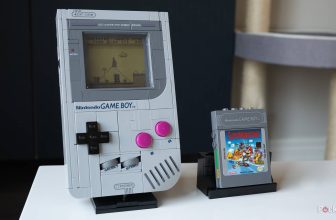Summary
- tvOS 26 will, at long last, let you set any AirPlay speaker as a permanent output, instead of forcing you to use HomePods or constantly reconnect third-party speakers.
- Apple’s new Liquid Glass aesthetic actually makes a lot of sense on an Apple TV, since it’s handy to see the underlying video when you’re scrubbing or using Control Center.
- Some other important changes include the option of a profile picker at boot, and FaceTime integration that alerts you to calls without making you set up a video conference.
A minor revelation that emerged from Apple’s September 9 iPhone event is that tvOS 26 wouldn’t reach Apple TVs on September 15, as with iOS 26, macOS 26, and other updates. The software is still due sometime this fall, but it seems likely that Apple is timing its release with updated hardware, which was also missing in action at the event. Apple does often stagger its fall product rollouts, whether to give the right products the spotlight or to buy itself a little more development time.
Whenever tvOS 26 does get here, there are several features that should make it worth installing right away if you’ve got an existing Apple TV 4K. Some are relatively frivolous, but others are long overdue for what’s supposed to be the focal point of a home theater setup. It does mean that Apple is paying attention to customer demands, at least.
6 Setting any AirPlay speaker as a permanent output
No more HomePod monopoly
5
If you frequent Reddit, a relatively common sight in Apple TV posts is a pair of HomePods (or HomePod minis) set up for stereo output. This is partly a sign of devotion to the Apple ecosystem — but the larger trend is that until now, Apple has only allowed HomePods to permanently pair as wireless speakers. You were certainly able to push audio to third-party AirPlay speakers, but you had to re-establish their connection in the Settings app every time you turned your system back on. It was much simpler to connect those speakers via your TV’s ARC or eARC port.
Until now, Apple has only allowed HomePods to permanently pair as wireless speakers.
Why the disparity? There’s no doubt Apple has benefited financially, but there may also have been a technical hurdle to overcome: video sync. Wireless audio is inherently laggier than a wired connection, which means that an Apple TV has to delay video so that voices, effects, and music match up with on-screen cues. That was obviously easier to coordinate with first-party speakers.
Whatever the explanation, tvOS 26 has the potential to breathe new life into the AirPlay speaker market. Certainly, it’d be a lot more convenient to connect my Sonos Ray wirelessly than rely on an optical cable and IR remote.
4
3 Better user-switching options and logins
Get to personalized content faster
Apple TV user profiles have always been something of a hassle for me. They’re potentially critical, since they impact your Watchlist, your recommendations, the content you can access, and even settings for paired AirPods. But to switch profiles on the fly, you have to open up the Control Center by holding down the Siri Remote’s TV button, and it’s all too easy to forget tvOS profiles exist if you’re already at the homescreen, and all you want to do is jump into an app like YouTube or Disney+. Many apps have their own in-app profiles anyway, which can make Apple’s system redundant.
It’s all too easy to forget tvOS profiles exist if you’re already at the homescreen, and all you want to do is jump into an app like YouTube or Disney+.
Taking a hint, tvOS 26 offers the option of profile selection every time your Apple TV boots. This does add an extra step before you can watch anything — but not much of one, and it should hopefully improve your experience by bringing out the personalization Apple intended. If nothing else, it’s actually faster to switch profiles this way than via Control Center. Now if only we could persuade Netflix to support the Up Next queue, life would be grand.
Separately, Apple is providing a new API to developers that links app logins to an Apple Account. That should make it easier to sign into services when setting up a new device.
2 A practical use for Liquid Glass aesthetics
Where transparency actually matters
Overall, I look the like of Liquid Glass, which is Apple’s term for the style uniting all of its 2025 software updates. I can point to issues here and there, but after numerous betas, Apple seems to have refined the scheme to the point that it’s consistently nice (or at least usable), without any major legibility problems. That’s in contrast with its June unveiling, where even Apple’s own promo videos hinted that you might have trouble reading buttons and labels on an iPhone if they were in front of a white background. There’s still the possibility of trouble reading icons, widgets, and notifications on some devices if you choose a “Clear” appearance.
There’s not only less concern about legibility, but an inherent value to a transparent UI.
On an Apple TV, Liquid Glass feels right at home. There’s not only less concern about legibility — many of you are probably watching on TVs over 50 inches — but an inherent value to a transparent UI. It keeps more of a movie or show visible, whether we’re popping open Control Center or scrubbing forward and backward. I’d also argue that shiny icons and borders feel more natural on a TV. Whereas I usually want iPadOS or macOS to be subdued, so it’s less distracting while I work, distraction is the goal of a media streamer. When I sit down for a movie, I want it to feel like an event.
1 Deeper FaceTime integration
Another usecase for HomePods
Did you know you can make FaceTime calls on an Apple TV? I did, but honestly, I often forget the option exists. The set-top doesn’t have its own camera or microphone, so you normally have to go into its FaceTime app and select an iPhone or iPad to use instead. It’s an awkward process, and not really worth it most of the time unless it’s important that you go hands-free — say, if you’re letting your parents watch you unwrap Christmas presents with your family.
When you’re signed into your profile, you now get notifications for all FaceTime calls linked to your Apple Account.
FaceTime integration is more relevant in tvOS 26, mostly because you don’t have to participate in a video call. When you’re signed into your profile, you now get notifications for all FaceTime calls linked to your Apple Account, whether audio or video. If you want to answer them, you can do that from an associated iPhone or HomePod. Perhaps that’s one more bid to keep HomePods relevant in the wake of opening up AirPlay pairing compatibility.
It’s also worth noting that Live Captions are being extended to more languages, including French, German, Japanese, Korean, Mandarin, and Spanish. If you have friends and family that aren’t fluent in English, help is around the corner.
Trending Products

Wireless Keyboard and Mouse Combo, ...

Lenovo New 15.6″ Laptop, Inte...

Dell Inspiron 15 3520 15.6″ F...

Acer Nitro KG241Y Sbiip 23.8” Ful...

Wireless Keyboard and Mouse Combo, ...

Zalman i3 NEO ATX Mid Tower Gaming ...

GAMDIAS ATX Mid Tower Gaming Comput...

Sceptre Curved 24-inch Gaming Monit...

Acer SH242Y Ebmihx 23.8″ FHD ...









